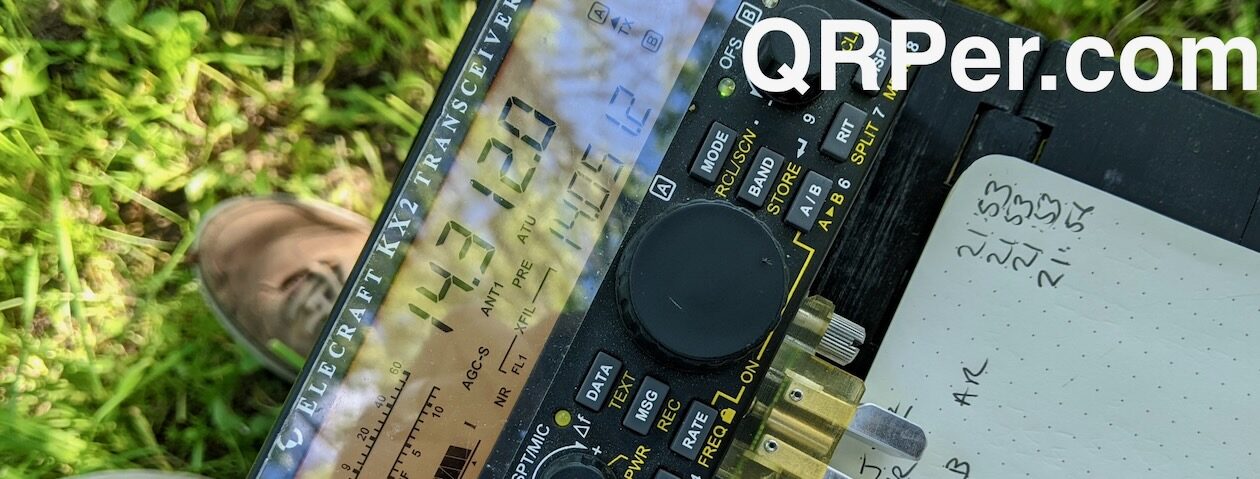It is Thursday, December 28th, the fifth day during my winter-break Florida POTA trip. The day began way too early. The rain was forecast to be a steady downpour where we camped. We woke at 3:30 AM to the light pitter-patter of rain on the tent fly and decided to get on the road before conditions worsened. Before heading to bed, we had put the bulk of our stuff already in the car. It wasn’t long before we had everything packed and were headed north.

I’ll admit it is an obsessive compulsive behavior that I like everything neatly organized. Because it was raining while we decamped, I had hurriedly bundled up the tent & fly and dumped them into the back of the car. That wet tent sitting back there really bothered me. About twenty minutes up the road, I found a shopping center with a covered area just begging to be used to repack that tent neatly as I desired. Now we could resume our trek northward.
Due to the early hour of our departure, we arrived at Alafia River State Park (K-1829) much earlier than time for check-ins. We found our tent site and while driving by, noted the two individuals in it were attempting to do what we did at 3:30 AM. We twiddled our thumbs in the car until 10 AM, grabbed our check-in tag, and headed to our site. Though it was still drizzling a bit, the tent was up and we were installed soon after checking in.
The rain was the harbinger of a cold front headed through Florida. With no sun to warm us, we bundled into our sleeping bags and Daisy into hers and fell asleep for an hour or so.
As I traveled through Florida, I asked myself, “Are there any of these parks to which I’d return?” Alafia River State Park is one for which I’d say “Yes.”
Alafia River State Park is a former phosphate mine, particularly for pebble phosphate. Because phosphate is found relatively close to the surface in the state, Florida is a leader in phosphate mining. The mining at Alafia River State Park created the topography making the park an awesome mountain biking destination with 17 miles of trails from beginner to advanced. The park also offers hiking and equestrian trails.
The campground in this park was the nicest we’d encountered. The sites were well spaced apart and, if so inclined, one could even glamp at this park. The bathrooms were sufficient though from our site, we had to walk the furthest to reach them. However, having that little bit of exercise was good for us and the walk pleasant. The park felt so open because of the topography but the high grasses characteristic of the area also gave the landscape a sense of privacy. The park was not crowded like other locations we had visited. Continue reading The Fun Continues at Alafia River State Park




































































 Finding a frequency in 20 meters, I started calling. Propagation in phases, but a satisfying activation emerged, with 40 contacts scattered throughout Europe in 70 minutes on the air, including 5 “park to park.” Among them, even IW0HK, who was at Montemario Park.
Finding a frequency in 20 meters, I started calling. Propagation in phases, but a satisfying activation emerged, with 40 contacts scattered throughout Europe in 70 minutes on the air, including 5 “park to park.” Among them, even IW0HK, who was at Montemario Park.






 These “No-Transformer” random wire antennas are designed to be paired with a good ATU–either external or internal. This type of antenna couldn’t be more simple.
These “No-Transformer” random wire antennas are designed to be paired with a good ATU–either external or internal. This type of antenna couldn’t be more simple.









